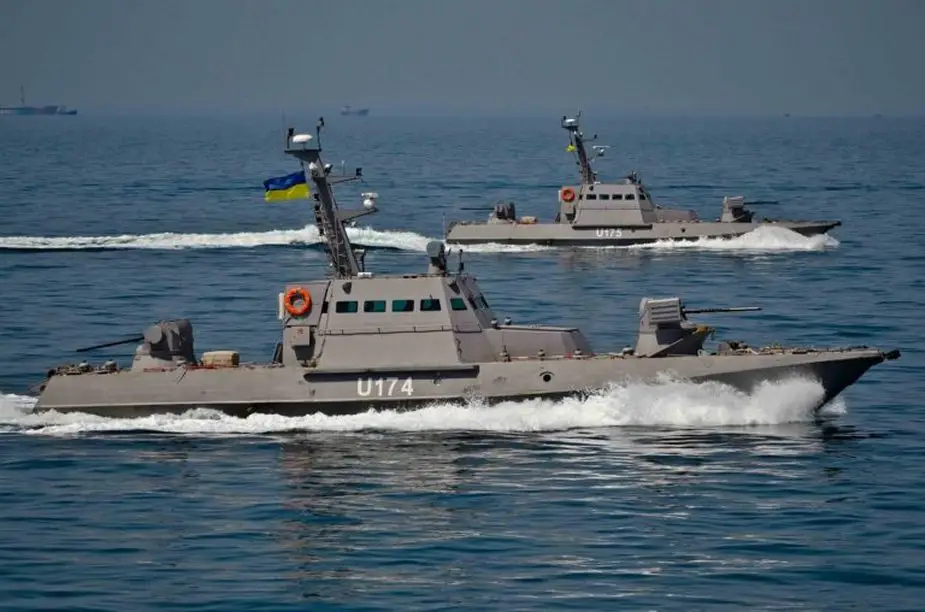The Ukrainian Navy has recently published its development stategy, going through 2035. Ukraine has understood the urgency it has to enhance its maritime security, due to the events that occured in the Black and Azov Seas in 2018.
 Akkerman (U174) and Berdiansk (U175) first two boats in the class (Picture source : Ukrainian MoD)
Akkerman (U174) and Berdiansk (U175) first two boats in the class (Picture source : Ukrainian MoD)
The events of 2018 in the Black and Azov Seas have clearly demonstrated the urgency for Ukraine on issues related to maritime security. As a result, the presentation at the end of November 2018 of the Ukraine fleet's development strategy through 2035 and its publication in January 2019 is an antithesis to the assertion that no attempts are being made to systematically address the issue of maritime security.
The proposed vision to develop the fleet by 2035 shows that the Ukrainian Navy’s command has a comprehensive view of what needs to be done to safeguard the interests of country in the Black and Azov Seas. The strategy clearly lists all the elements of sea power that together enable the state to influence the situation at sea. The document mentions not only the equipment component, but also the need for appropriate staffing, infrastructure and procurement in general.
The strategy’s implementation involves three stages—2019–25, 2025–30 and 2030–35. At each of these stages, a qualitative strengthening of the fleet capabilities is foreseen. At the same time, realization of the goals of one stage will be the basis for successful work in the next stage.
Initially, the Navy’s strategy implies protecting Ukraine's interests in the coastal zone (up to forty nautical miles). For this purpose, the Navy is planning to first install a system of intelligence and reconnaissance assets on the sea surface. This should help to better identify threats, which in turn would reduce the critical time between detection and response. Coastal multiple rocket-launched systems (MRLS) and barrel artillery, as well as mines would help to counteract the corresponding threats. In addition, during 2019-2025, the gradual acquisition of anti-ship missile systems of various types—ground, air and sea-based—is envisaged.
The second stage envisions the ability to operate in the exclusive economic zone (up to two hundred nautical miles). For this purpose, a system for monitoring the surface, underwater and air conditions at the appropriate range will be established. At this stage, the Navy should have the potential to be physically present in the exclusive economic zone and strike at the enemy primarily with anti-ship cruise missiles. Thus, it is precisely at this stage that the so-called “mosquito fleet” will enter game—small boats of little tonnage (up to five hundred to six hundred tons) that are capable of striking enemy assets with high-precision weaponry.
The third stage prescribes the ability of the Ukrainian fleet to operate in the open ocean and to be a contributor to global security. During the period of 2030–35, the Ukrainian fleet should be able to operate outside the two-hundred-mile zone at a considerable distance from its own bases. In this way, Ukraine will be able to participate in NATO/EU joint operations if needed. In addition, at that time, Navy ships will need the capability to hit both sea and ground targets. To perform all the above mentioned, the Ukrainian fleet will have to acquire its first multi-purpose corvettes.
The Navy’s strategy for 2035 was developed on the basis of NATO’s doctrine AJP-3.1 that concerns the alliance’s naval operations. The Ukrainian Navy’s strategy stipulates that by 2025 Ukrainian sailors will be prepared to act on the basis of this doctrine in cooperation with NATO forces. In essence, it is about implementing the key goal of Ukrainian foreign policy—namely joining the North Atlantic Alliance, including through increased interoperability. This development will be based on the experience and skills that have already been acquired within the framework of the international Sea Breeze exercises with NATO forces.



